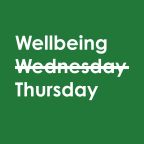A new governance guide for health and safety in New Zealand workplaces is being hailed as world-leading and potentially transformative for organisations.
Titled Health and Safety Governance: A Good Practice Guide, this comprehensive resource, produced by the Institute of Directors and WorkSafe, outlines the crucial role of directors and boards in enhancing workplace safety.
Craig Marriott, lead author behind the guide’s development, emphasises that it goes beyond merely reiterating legislative requirements, offering practical insights and encouraging a more holistic approach to workplace safety.
The guide aims to shift the focus from mere compliance to creating a productive work environment. Craig says that the guide introduces concepts like ‘courage’ and ‘care,’ which are not typical regulatory terms but are essential for fostering a culture of safety.
“We wanted to move away from a compliance focus for health and safety to a more productive work focus,” he says.
“WorkSafe has endorsed the guide, and we had some interesting conversations around words like courage and care because they’re not typical regulatory words.”
Developed in collaboration with the Business Leaders Health and Safety Forum and the General Manager Safety Forum, and endorsed by WorkSafe, the guide addresses several key issues. These include the persistently high levels of workplace fatalities in New Zealand, the challenge of reaching and upskilling small businesses in high-risk sectors, and the lack of directors with significant safety backgrounds on boards.
The guide also highlights that health and safety professionals often lack the skills needed for executive and governance roles. Additionally, it critiques the tendency to focus on minor issues rather than high-risk areas, the enduring “she’ll be right” attitude in some workplaces, and the risk of turning the guide into a mere compliance checklist rather than a tool for meaningful change.
It also addresses hindsight bias, which can lead to blame rather than a proper understanding of complex situations.
Introducing the concept of the ‘five C’s’—curiosity, courage, care, capability, and capacity—the guide moves away from a compliance-focused approach to one that fosters a more productive work environment. These principles encourage leaders to ask questions they don’t have answers to, admit when they lack knowledge, and genuinely care for their workers.
“So we wanted people to be able to say, to have the courage to say, look, I don’t know the answer to that,” Craig says.
“And when you are genuinely curious about an organisation, you want to go in and ask questions that you don’t know the answer to, rather than ask questions just to confirm your prior understanding or bias.”
One of the guide’s key messages is that health and safety is a complex issue requiring different approaches than those used for simpler problems. It encourages leaders to understand the local context and why people behave the way they do, rather than simply seeking root causes to fix.
This shift in perspective is crucial for creating meaningful change in workplace safety.
“Work is complex. To understand context properly, you’ve got to be curious,” Craig says.
“It’s about caring for your workers, doing the right things to support them, putting the right systems in place, asking the right questions, building the right capability and capacity in the system, and then we’ll get better outcomes.”
The guide includes a self-assessment review tool that organisations are encouraged to use with their board and management team. This tool is designed to elevate discussions and surface any problems, promoting meaningful conversations rather than tick-box exercises.
Health and safety managers and HR professionals are advised to share the guide with their board and executives, using it as a benchmark for good practice. Craig cautions against reducing the guide to a simple audit checklist, emphasising that it is meant to inspire thoughtful and insightful discussions that address issues meaningfully.
Importantly, the guide highlights that the factors underpinning good safety are the same as those that drive good performance in other areas of business. By focusing on creating a positive working environment and fostering open and honest communication, organisations can benefit across all aspects of their operations, not just in health and safety.
“The way I look at it is that the things that underpin good safety are the same things that underpin good performance in other areas,” Craig says.
“If you build those factors and capabilities, all those things will look after themselves. It’s like a rising tide lifting all boats.”
The guide also touches on the importance of understanding complexity in the workplace. It encourages leaders to recognise that simplification is not always the answer and that solutions may vary depending on the context. This nuanced approach to workplace safety represents a significant shift in understanding how health and safety and organisations function.
As a result of this new guide, organisations—especially leaders—should use the self-assessment review tool with their board and management team. They should foster a culture of curiosity and courage where it is acceptable to admit gaps in knowledge.
The focus should be on creating a good working environment that supports safety and overall performance, understanding and acknowledging the complexity of workplace safety issues, and involving workers in co-designing solutions. Additionally, it is important to move away from a compliance-focused approach towards a more holistic view of workplace safety.
Craig highlights the significance of curiosity and courage among leaders and board members in addressing health and safety issues.
“We wanted people to be able to have the courage to say, look, I don’t know the answer to that,” he says.
“And when you are genuinely curious about an organisation, you want to go in and ask questions that you don’t know the answer to, rather than ask questions just to confirm your prior understanding or bias.”
The guide’s unique approach and comprehensive coverage of governance in health and safety make it a potentially influential resource not just in New Zealand but globally. Its emphasis on complexity, context, and creating the right working environment sets it apart from other guidance that often simply reiterates legislative requirements.
“There’s not been, to date, a minimum standard for directors regarding what they should know about health and safety,” Craig says. “So, it’s not as though you won’t be allowed onto a board if you can’t demonstrate health and safety knowledge.”
By building on these factors and capabilities, organisations can create benefits across all aspects of their operations, not just in health and safety.









